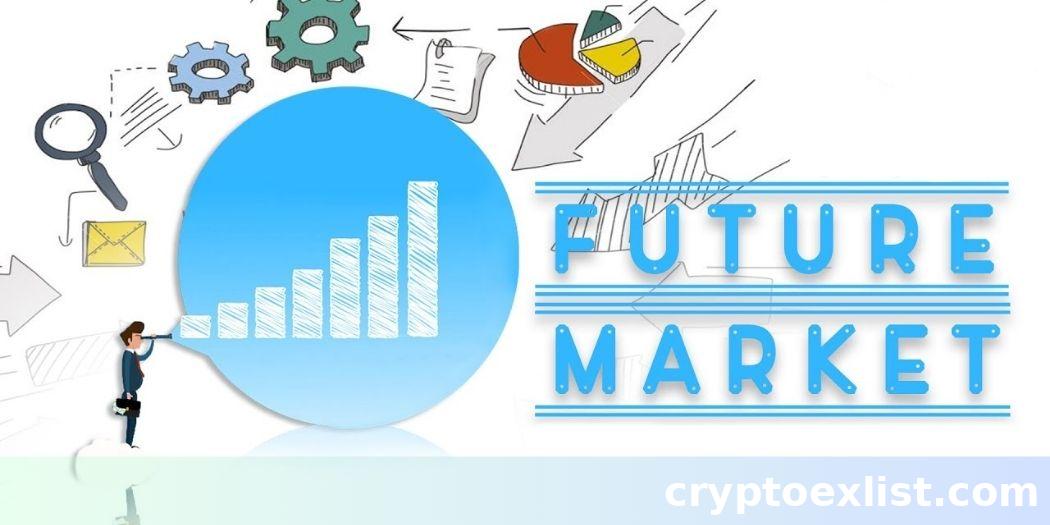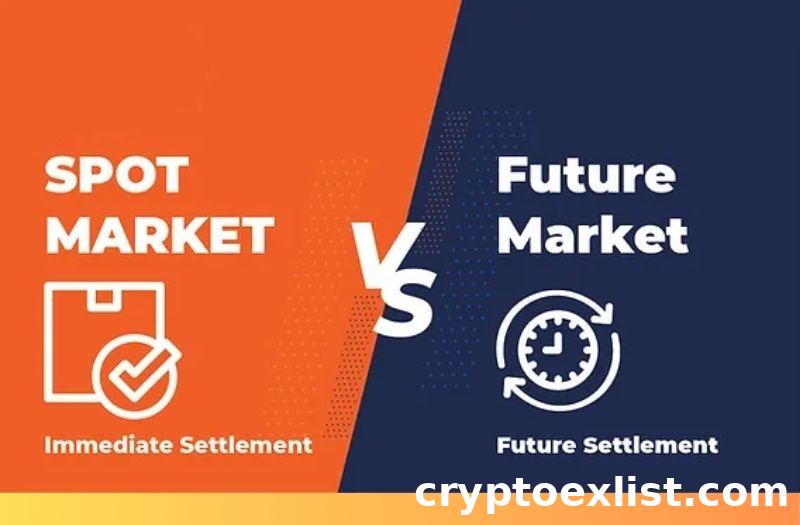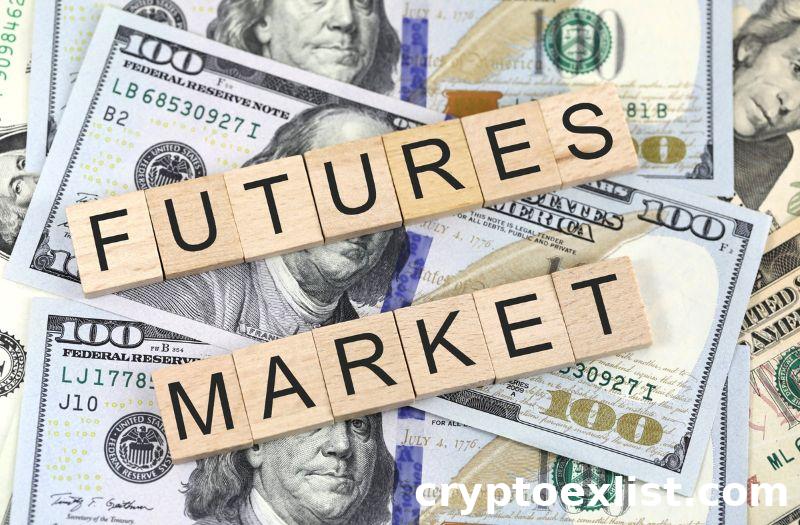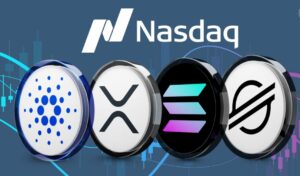
The futures market is an essential part of global finance, allowing traders to hedge risks, speculate on price movements, and diversify their portfolios. Whether you’re a newcomer or a seasoned investor, understanding the fundamentals of futures contracts and how they operate is crucial to navigating this dynamic market. In this comprehensive guide, we explore everything from the historical background of futures trading to the key concepts, market participants, and advanced strategies that can help you succeed in the fast-paced world of futures. With platforms like Binance making futures trading more accessible than ever, now is the perfect time to expand your knowledge.

Introduction to the Futures Market
Definition of Futures Contracts
A futures contract is a legally binding agreement between two parties to buy or sell an asset at a predetermined price at a specified future date. Unlike spot trading, where assets are bought and sold immediately at the current market price, futures contracts allow traders to speculate on the future price of assets, such as cryptocurrencies, without owning the underlying asset. On platforms like Binance, futures trading provides the flexibility to go long (buy) or short (sell), allowing traders to profit from both rising and falling markets, making it an essential tool for managing risk and maximizing potential profits.
Historical Background and Evolution
The futures market has a rich history, dating back to ancient civilizations, where agricultural contracts were used to lock in prices for crops before harvest. However, the modern futures market as we know it began in the 19th century with the establishment of the Chicago Board of Trade (CBOT), where standardized contracts for commodities like wheat and corn were traded. Over time, the futures market has evolved, expanding from commodities to include financial instruments like currencies, interest rates, and cryptocurrencies. Today, platforms like Binance offer futures trading in digital assets, reflecting the market’s ongoing evolution and its growing importance in the financial world.
Importance in Global Trade and Investment
Futures trading plays a crucial role in global trade and investment, as it helps businesses and investors hedge against price volatility. Companies that rely on commodities can lock in future prices to protect themselves from market fluctuations, while investors use futures to speculate on price movements and diversify their portfolios. In the cryptocurrency market, futures contracts allow traders to manage risks and capitalize on market opportunities. For example, on Binance, futures trading provides an efficient way for crypto traders to hedge their spot positions or gain exposure to volatile assets without holding them directly.
Spot Market and Futures Market
The spot market and the futures market are two distinct areas of trading. In the spot market, assets are bought and sold immediately at the current market price, while the futures market involves agreements to trade assets at a future date and predetermined price. On platforms like Binance, traders can engage in both markets, depending on their goals. The spot market is ideal for those looking to purchase assets for immediate ownership, whereas the futures market offers flexibility for those looking to speculate on price movements or hedge their positions. Understanding the differences between these markets is key for new traders entering the cryptocurrency space.
Geographical Area of the Futures Market
The futures market operates globally, with major trading hubs located in financial centers like the United States, Europe, and Asia. While the concept of futures trading originated in the U.S., with exchanges like the Chicago Mercantile Exchange (CME) leading the way, other countries have developed their own thriving futures markets. Platforms like Binance allow traders from various regions to access cryptocurrency futures, bridging the gap between traditional financial markets and the growing digital asset space. This global reach ensures liquidity and a diverse range of trading opportunities for investors worldwide.

Key Components of the Futures Market
Types of Futures Contracts
In the futures market, there are various types of futures contracts that traders can engage with, depending on the asset class they are interested in. The most common types include commodity futures, such as oil, gold, and agricultural products, and financial futures, which are tied to assets like interest rates, stock indices, and cryptocurrencies. On platforms like Binance, cryptocurrency futures are highly popular, allowing traders to speculate on the future price of digital assets like Bitcoin and Ethereum. These contracts provide an opportunity for traders to go long or short, depending on their market outlook, and are essential for those looking to hedge their investments or take advantage of price volatility.
Participants in the Futures Market
The futures market consists of various types of participants, each with different motivations for trading. Hedgers use futures contracts to protect themselves against unfavorable price movements in an asset they already own or plan to acquire. For example, a company may use futures to lock in the price of raw materials. On the other hand, speculators are traders who seek to profit from price fluctuations in the futures market by buying low and selling high. Platforms like Binance also attract market makers, who provide liquidity by consistently buying and selling futures contracts. Understanding the role of each participant is crucial for new traders, as it helps them navigate the market dynamics and develop effective trading strategies.
Exchanges Where Futures Are Traded
Futures contracts are traded on both traditional and cryptocurrency exchanges. In the traditional financial world, exchanges like the Chicago Mercantile Exchange (CME) and the New York Mercantile Exchange (NYMEX) are some of the most renowned platforms for futures trading. In the realm of cryptocurrency, platforms like Binance Futures have emerged as leading exchanges for trading digital asset futures. Binance offers a user-friendly interface, a variety of futures contracts, and advanced trading tools, making it an ideal choice for beginners and experienced traders alike. These exchanges serve as marketplaces where buyers and sellers can trade futures contracts efficiently and securely.
How Futures Trading Works
Mechanics of Buying and Selling Futures
Futures trading involves buying or selling contracts that represent an asset at a predetermined price on a specified future date. On platforms like Binance, traders can speculate on the price of cryptocurrencies without having to own the underlying asset. The mechanics are simple: if you believe the price of Bitcoin will rise, you take a long position by buying a futures contract. If you think the price will fall, you take a short position by selling the contract. This flexibility allows traders to profit from both upward and downward price movements. Unlike spot trading, where assets are exchanged instantly, futures contracts are executed on the contract’s expiration date unless closed earlier.
Role of Margin and Leverage
One of the defining features of futures trading is the use of margin and leverage. Margin refers to the initial deposit required to open a position, which is only a fraction of the contract’s total value. On Binance Futures, traders can use leverage, meaning they can control a much larger position than their actual capital. For example, with 10x leverage, you can open a position worth $10,000 with just $1,000. While leverage can significantly amplify profits, it also increases risk, as even small price fluctuations can result in large losses. Therefore, beginners must carefully manage their leverage to avoid unexpected liquidations.
Settlement Process: Physical vs. Cash Settlement
Futures contracts can be settled in two ways: physical delivery or cash settlement. In traditional commodity futures markets, physical settlement involves the actual delivery of the underlying asset, such as oil or wheat. However, in cryptocurrency futures on platforms like Binance, the most common method is cash settlement. With cash settlement, no physical asset is exchanged; instead, the difference between the contract price and the asset’s current market price is settled in cash. This method simplifies the trading process, making futures trading more accessible and efficient for cryptocurrency traders. Understanding the settlement process helps traders make informed decisions and manage their positions effectively.

Market Analysis Techniques
Fundamental Analysis in Futures Trading
Fundamental analysis in futures trading focuses on evaluating the intrinsic value of an asset by analyzing external factors such as market trends, economic data, and news events. In cryptocurrency trading on Binance, fundamental analysis involves studying the underlying blockchain technology, project developments, regulatory news, and overall market sentiment. For example, positive news about Bitcoin adoption or a major blockchain upgrade can drive prices higher, while regulatory crackdowns might cause prices to drop. By understanding these factors, traders can make informed decisions about the future price movements of assets, making fundamental analysis a vital tool for long-term strategies.
Technical Analysis: Charts and Indicators
Technical analysis is one of the most popular methods used by traders in futures markets, especially on Binance. This approach involves analyzing historical price data, charts, and trading volumes to predict future price movements. Traders use various technical indicators like Moving Averages (MA), Relative Strength Index (RSI), and Bollinger Bands to identify trends, potential entry points, and market reversals. For beginners, learning how to read candlestick charts and apply indicators can help improve trading strategies by making data-driven decisions. Binance Futures offers advanced charting tools that make it easier to visualize market trends and execute trades at the right time.
Sentiment Analysis and Its Impact on Prices
Sentiment analysis involves gauging the overall mood or emotional state of the market, which can heavily influence asset prices. In the highly volatile cryptocurrency markets, sentiment can change quickly based on news, social media discussions, or major events. For instance, positive market sentiment can drive prices up as more traders buy, while negative sentiment can lead to panic selling and sharp price declines. Platforms like Binance often reflect these sentiment-driven price swings, making it crucial for traders to monitor sentiment indicators like the Fear & Greed Index or track cryptocurrency discussions on social media platforms. By understanding how sentiment influences the market, traders can better time their trades and anticipate potential price movements.
Regulatory Framework Governing Futures Markets
Overview of Regulatory Bodies
The futures markets, including cryptocurrency futures, are governed by various regulatory bodies worldwide to ensure transparency, security, and fairness in trading activities. In traditional financial markets, agencies like the Securities and Exchange Commission (SEC) in the U.S. and the Financial Conduct Authority (FCA) in the U.K. play crucial roles in overseeing futures trading. In the cryptocurrency space, exchanges like Binance must also adhere to local and international regulations to operate legally. The Commodity Futures Trading Commission (CFTC) is another key player that regulates derivatives, including futures contracts in the U.S., ensuring that traders are protected from fraud and manipulation.
Compliance Requirements for Traders
To trade futures contracts on platforms like Binance, traders must comply with specific regulatory requirements. Most platforms enforce Know Your Customer (KYC) and Anti-Money Laundering (AML) policies, requiring users to verify their identity by providing documents like a government-issued ID and proof of address. These compliance measures help reduce the risks of illegal activities such as money laundering and fraud. Additionally, some jurisdictions may limit the amount of leverage that retail traders can use in futures trading, adding another layer of protection. As a beginner, it’s important to familiarize yourself with these regulations to ensure you’re operating within legal boundaries and protecting your account.
Recent Changes in Regulations
The regulatory landscape for cryptocurrency futures is constantly evolving as governments and regulatory bodies work to keep pace with the rapid growth of the digital asset market. In recent years, many countries have introduced stricter regulations to enhance security and minimize risks for traders. For example, the European Union’s Markets in Crypto-Assets (MiCA) regulation aims to provide a clear framework for cryptocurrency trading, including futures contracts. Platforms like Binance have responded by increasing transparency and ensuring compliance with local laws. As regulations continue to evolve, traders need to stay updated on changes, as these can impact everything from trading strategies to the leverage allowed in futures contracts. Understanding the latest regulatory shifts will help you navigate the futures market safely and effectively.
Advanced Concepts in Futures Trading
The Role of Futures in Portfolio Diversification
Futures contracts play an essential role in portfolio diversification, helping traders hedge against market volatility and spread risk across different asset classes. For instance, a trader holding a portfolio primarily composed of cryptocurrencies like Bitcoin can use futures contracts to balance potential losses during periods of high volatility. On Binance, futures trading allows investors to hedge their spot positions by taking opposite positions in the futures market, thereby reducing their exposure to adverse market movements. Diversifying with futures enables traders to protect their portfolio and ensure long-term growth, making it a valuable strategy for both beginners and experienced investors.
Options on Futures: What You Need to Know
Options on futures provide traders with even more flexibility by offering the right, but not the obligation, to buy or sell a futures contract at a specific price before a set expiration date. This differs from standard futures contracts, where traders are obligated to execute the trade upon the contract’s expiration. With Binance Futures, traders can use options to limit potential losses while still capitalizing on favorable price movements. Understanding options on futures can be highly beneficial, as they give traders more control over their risk exposure while offering opportunities for higher returns, particularly in volatile cryptocurrency markets.
Impact of Macroeconomic Factors on Futures Prices
Macroeconomic factors such as interest rates, inflation, and geopolitical events can significantly influence futures prices, especially in global markets like cryptocurrencies. For example, rising inflation or interest rate hikes by central banks can lead to increased volatility in assets like Bitcoin, which in turn affects the pricing of futures contracts. On Binance, traders must keep an eye on these macroeconomic indicators to anticipate potential price fluctuations. Understanding how external factors impact the market helps traders make informed decisions, allowing them to adjust their futures positions accordingly and manage risk more effectively in an ever-changing financial environment.
Conclusion
Mastering the futures market opens up a world of opportunities for traders looking to balance risk and maximize profits. By understanding the essential components like types of contracts, market mechanics, and analysis techniques, you can make more informed decisions and better navigate the complexities of futures trading. Whether you’re using futures for portfolio diversification or simply to hedge against market volatility, keeping up with regulatory changes and macroeconomic trends is key to staying ahead. With platforms like Binance, which offer user-friendly access to cryptocurrency futures, it’s easier than ever for traders to take advantage of this exciting market. By applying these insights, beginners and seasoned traders alike can thrive in the futures space.























